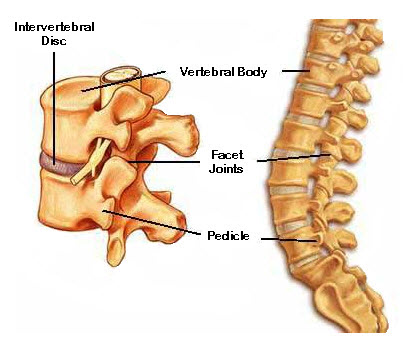Approximately 26 million Americans between the ages of 20 and 64 are affected by frequent lower back pain [1], one of the major causes of worker disability. The problem costs the economy roughly $50-100 billion each year [2].
Most lower back problems involve the intervertebral disc (IVD), shown in this illustration [4]:
The IVD is the smallest segment of the spine that exhibits biomechanical characteristics similar to that of the entire spine [3]. The IVD is composed of annulus bulk and nucleus pulposus, both soft tissues.
Finite element analysis (FEA) has been applied in orthopedic biomechanics and spine biomechanics research since 1983. Typically, the IVD is modeled by solid elements. Many experimental observations, however, suggest that it is more realistic to consider soft tissue in the IVD as a biphasic model. For example, when the disc is compressed, fluid flows out from either the entire disc [5] or from disc slices; therefore, one can consider the soft tissues in IVD to be a multiphase system.
Clinical studies shows that back pain is associated with the mechanical behavior of the intervertebral disc. A significant finding is that the degenerated intervertebral disc has lower permeability than a normal disc [3]; therefore, using coupled pore-pressure-thermalelements in a lumbar motion segment simulation provides a realistic model for clinical study of degenerated intervertebral discs.



